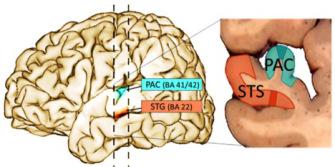
Sex differences are found in the brains of people with autism in particular regions
Though autism spectrum disorder (ASD) is diagnosed more frequently in boys than in girls, experts do not understand why. There is some evidence that gender differences exist, but more needs to be done to understand specifically what is happening at the cellular and network levels. So few brains of people with autism are available for study that this has been a very hard question to answer – but with the progress of the Autism BrainNet (www.takesbrains.org), this is becoming a possibility.
![A new way to look at the brains of males and females with autism BoryanaStamova[1]](http://m5.paperblog.com/i/149/1495051/a-new-way-to-look-at-the-brains-of-males-and--L-swXVim.jpeg)
Boryana Stamova, PhD, lead researcher
This study looked at these molecules in two areas of the brain known to be involved in autism. First, the superior temporal sulcus (STS) association cortex which participates in circuits necessary for understanding social cues and facial expressions. Secondly, the primary auditory cortex, which is involved in sound processing. They looked at 5,000 sncRNAs in brains of people with ASD and compared them to the brains of people without autism. The sncRNA that were studied included those involved in cell to cell signaling, axon guidance, and formation of synapse which affect the core autism deficits. The goal was to see if there are different patterns of the sncRNAs between male and female brains with ASD. As expected, the sncRNA expression was different between those with autism and those without autism. In addition, there were differences of sncRNA in brains of males and females with autism including those that affect the axon guidance pathway.
Could this explain why females have different symptoms, or that they may be able to mask their symptoms through more adaptive social abilities? There is much more work that needs to be done. Unfortunately there are so few brains of people with autism, and even fewer brains of females with autism, that this question has been hard to study.
You can make a difference in understanding the brains of people with autism. Even if you do not have autism yourself, you can register with the Autism BrainNet to learn more about post-mortem donation. There is no obligation. You receive a quarterly newsletter that provides important information, scientific discoveries, and resources for the community. It’s easy, go to www.takesbrains.org.
